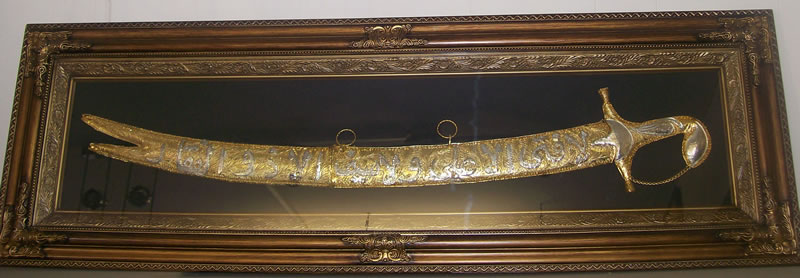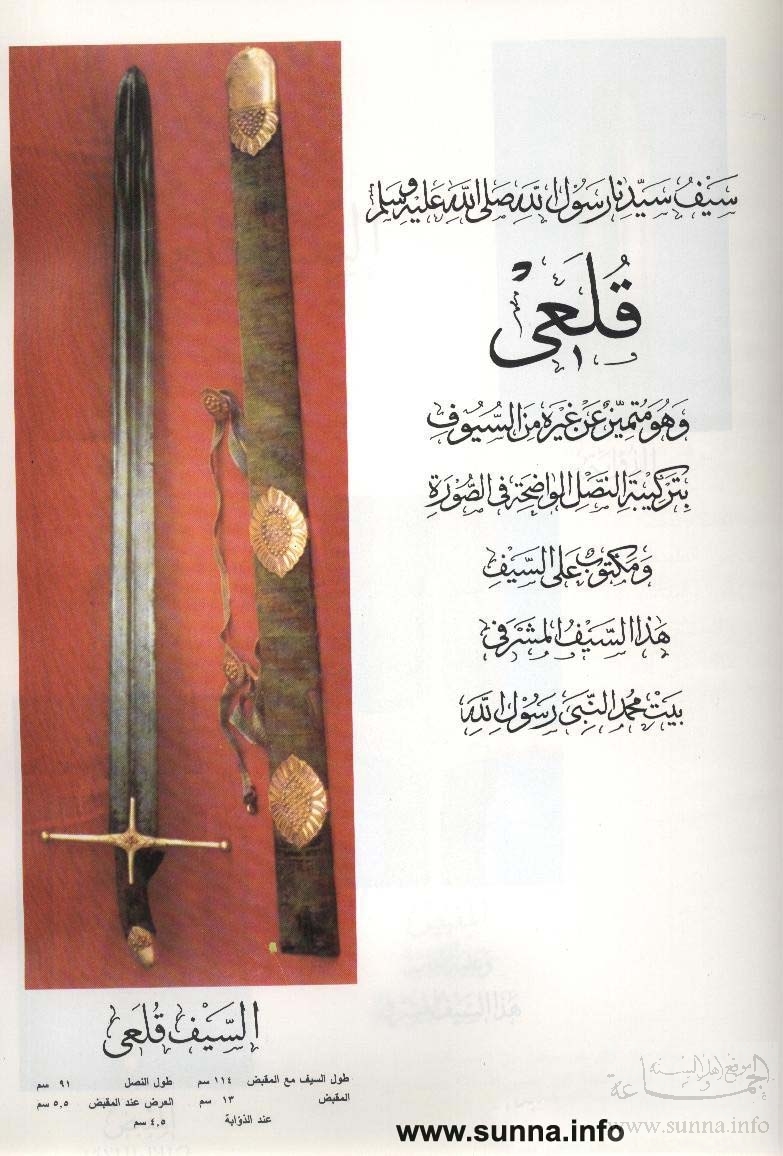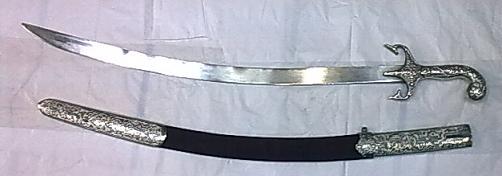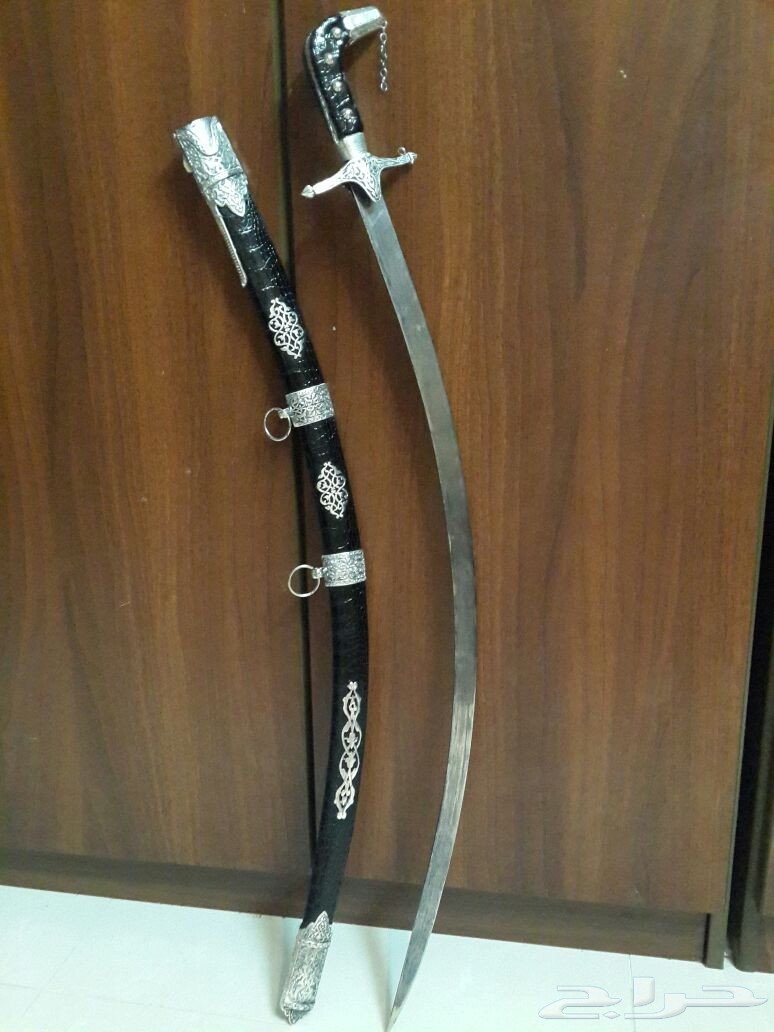Banu Hashim
FULL MEMBER

- Joined
- Mar 2, 2015
- Messages
- 121
- Reaction score
- 1
- Country
- Location
I thought about making a thread about Arabian/Arab swords and daggers as they played key roles in thousands upon thousands of military battles throughout the ages and formed an important element in the Rashidun, Umayyad, Abbasid (3 of the 11 largest empires to date) etc. caliphates and empires.
Aside from countless of other kingdoms, sultanates, sheikdoms, emirates, sharifates, imamates across the Arab world and in 3 continents (Asia, Africa and Europe).
Although swords have lost their importance on the battlefield in the modern era as they are practically only used for ceremonial purposes nowadays, they played a role in the military history of the world for millenniums and until not long ago.
I myself am a collector of old Arabian/Arab swords and daggers. In general old artifacts. This passion was inherited from the family.
There are dozens of different swords and daggers found in Arabia and the Arab world but some of the most famous/well-known are the scimitar sword and the janbiya which is a dagger. In terms of steel then the Damascus steel is arguably the most famous of them all.
I have seen that @Mosamania made a thread about historical weapons in Arabia so I will use some of the useful information that he posted in this thread.
Arabian Historical Weapons
Here is a sword from the Sabaean Kingdom which existed 1200 BC until 275 AD in what is now Southern Arabia (Yemen, parts of Southern KSA and Oman).


Ancient pre-Islamic Arabian dagger;


An Arabian standard saif;
A curved sword characterized by a relatively short and wide blade.

Some old Arabian scimitar swords;


The world famous Damascus steel;
More to follow later as I can only post 8 photos per post.
@Rakan.SA @Gasoline @Arabian Legend @Yzd Khalifa @BLACKEAGLE @JUBA @Altamimi @Bubblegum Crisis @Mosamania @Full Moon @Awadd @Antaréss @ebray @Dr.Thrax @Frogman @Mahmoud_EGY @Indos @Aslan @United @Zarvan @Hassan Al-Somal @Hell NO @Amir_Pharaoh @1000 @Malik Alashter @SALMAN AL-FARSI @Tunisian Marine Corps @Chai @agentny17 @Arabi @farag @Haitham @FARSOLDIER @Mootaz-khelifi @Algeria @Falcon29 etc. etc.
Aside from countless of other kingdoms, sultanates, sheikdoms, emirates, sharifates, imamates across the Arab world and in 3 continents (Asia, Africa and Europe).
Although swords have lost their importance on the battlefield in the modern era as they are practically only used for ceremonial purposes nowadays, they played a role in the military history of the world for millenniums and until not long ago.
I myself am a collector of old Arabian/Arab swords and daggers. In general old artifacts. This passion was inherited from the family.
There are dozens of different swords and daggers found in Arabia and the Arab world but some of the most famous/well-known are the scimitar sword and the janbiya which is a dagger. In terms of steel then the Damascus steel is arguably the most famous of them all.
I have seen that @Mosamania made a thread about historical weapons in Arabia so I will use some of the useful information that he posted in this thread.
Arabian Historical Weapons
Here is a sword from the Sabaean Kingdom which existed 1200 BC until 275 AD in what is now Southern Arabia (Yemen, parts of Southern KSA and Oman).


An Arabian standard saif;
A curved sword characterized by a relatively short and wide blade.

Some old Arabian scimitar swords;


A Yemeni Janbiya;


The world famous Damascus steel;
@Rakan.SA @Gasoline @Arabian Legend @Yzd Khalifa @BLACKEAGLE @JUBA @Altamimi @Bubblegum Crisis @Mosamania @Full Moon @Awadd @Antaréss @ebray @Dr.Thrax @Frogman @Mahmoud_EGY @Indos @Aslan @United @Zarvan @Hassan Al-Somal @Hell NO @Amir_Pharaoh @1000 @Malik Alashter @SALMAN AL-FARSI @Tunisian Marine Corps @Chai @agentny17 @Arabi @farag @Haitham @FARSOLDIER @Mootaz-khelifi @Algeria @Falcon29 etc. etc.
Last edited:










 Janbiya
Janbiya






 I don't want to ruin your thread so we continue this somewhere else.
I don't want to ruin your thread so we continue this somewhere else.






















 سيوف جلالة الملك خالد بن عبدالعزيز آل سعود .. رحمه الله
سيوف جلالة الملك خالد بن عبدالعزيز آل سعود .. رحمه الله سيوف جلالة الملك خالد بن عبدالعزيز آل سعود .. رحمه الله
سيوف جلالة الملك خالد بن عبدالعزيز آل سعود .. رحمه الله


